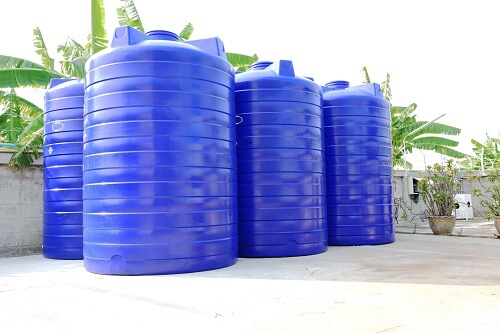How To Winter-Proof Your Water Tank

As with any home changes and investment, water tanks need proper maintenance to ensure long-term performance. And one of the most essential maintenance tasks to add to your to-do list is winter-proofing your water tank, especially in areas where outside temperature can drop to negative figures.
This article shares preventive steps to keep water in your storage tanks from freezing.
1. Be Smart About Your Purchase
Having a winter-proof water tank starts by choosing the right tank to install. Whether buying a water tank for the first time or needing to replace your existing one, purchasing the right water tank can help minimize your winter-proofing efforts.
In general, here are some tips for choosing a freezing-resistant water tank:
- Opt For A Bigger Tank
Based on the fundamental law of science, the bigger the size and volume of your water tank, the longer it takes to freeze. Also, the fact that the tank is replenished with warmer water throughout the day can further delay the freezing process. As such, you should get a tank that’s slightly bigger than you think you need.
- Ditch the Rectangular Styles
For the same reason that a bigger tank takes longer to freeze, a rounded water tank insulates better than similar-sized cubical or rectangular ones. This is because round-shaped tanks have smaller areas which reduce heat loss.
- Choose Plastic Tanks
If freezing is an issue, plastic tanks are much preferred to metal ones. Metal water tanks have high thermal conductivities. This means that metal is quicker to respond to a change in its surrounding’s temperature than plastic.
As such, when it’s cold, metal tanks can freeze faster than plastic. In addition, metal tanks are less flexible. When water freezes and expands, metal tanks can crack under pressure. By contrast, plastic tanks are more flexible, ensuring they can withstand the expansion caused by freezing.
2. Bury Your Tanks
An efficient rainwater storage below ground enjoys more consistent and stable temperatures, regardless of whether it’s winter or summer. So regardless of the tank you buy, one way to effectively winter-proof it is to bury it.
Underground tanks are harder to access, more difficult to maintain, and pricier to install. Nevertheless, you can get the most out of them in terms of guarding against seasonal and temperature-based issues.
3. Ensure Proper Insulation
Insulating an exposed water tank is one of the most effective ways to keep water from freezing. With the right insulation covers, you can stop heat from escaping from your water tank and keep the temperatures from dropping below freezing.
You need a water tank jacket covering the side and top of the water tank to effectively insulate it from the outdoor environment. However, avoid flat tank covers. A flat cover can significantly increase the chance of ice forming since the snow, rain, or moisture overflow has nowhere to go and tends to accumulate on the surface. Instead of flat covers, opt for sloped covers that allow water to slide off.
In addition, never insulate the bottom of the tank. Since warm air rises from below, leaving the bottom part of the tank intact allows warmer air and prevents the water from freezing.
4. Check For Cracks And Leaks
Heat loss from inside the tank is quicker if the pipes have cracks and leaks. This can result in cold air entering and causing gradual freezing in your pipes and tank.
As such, you want to ensure that your pipe networks are intact and have no leaks before winter. It’s always a good idea to call a professional to examine your pipes and repair any leaks, regardless of how minor they may be.
5. Use Water From Tanks
Water left to stand still is more prone to freezing than moving water. Thus, consider using water from your water storage tank during winter to keep the water moving and prevent it from freezing.
6. Add A Heating System
Installing a tank heater helps keep the water temperature in your water tank above the freezing point. You can find a simple electric heater that can be immersed in the water tank or invest in a sophisticated heating system installed in the tank’s walls to keep the water warm.
Takeaway
Water tanks are a common addition to most homes. After all, it’s a convenient and sustainable way to store and conserve water when using your washing machine and doing other household chores.
Water freezing in storage tanks is a prevalent issue throughout the winter. Thus, it’s essential to take steps to winter-proof water tanks, especially in areas where temperatures can take a negative plunge.





